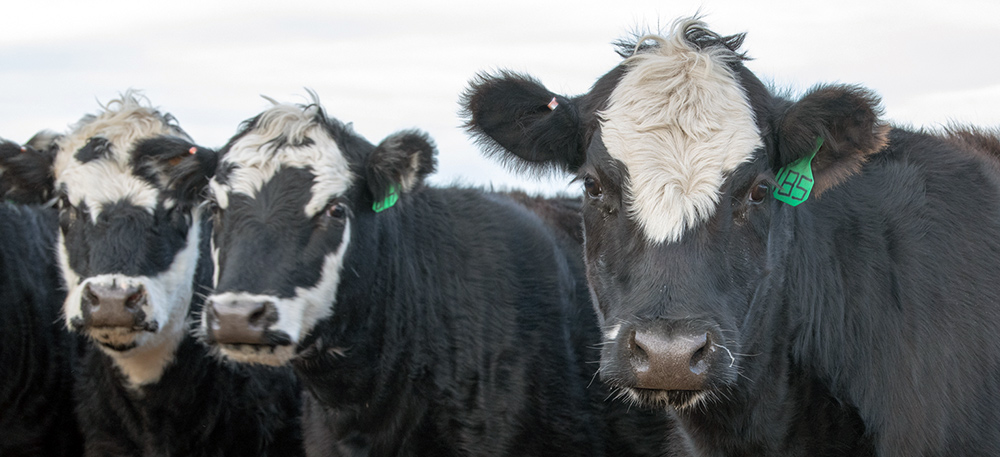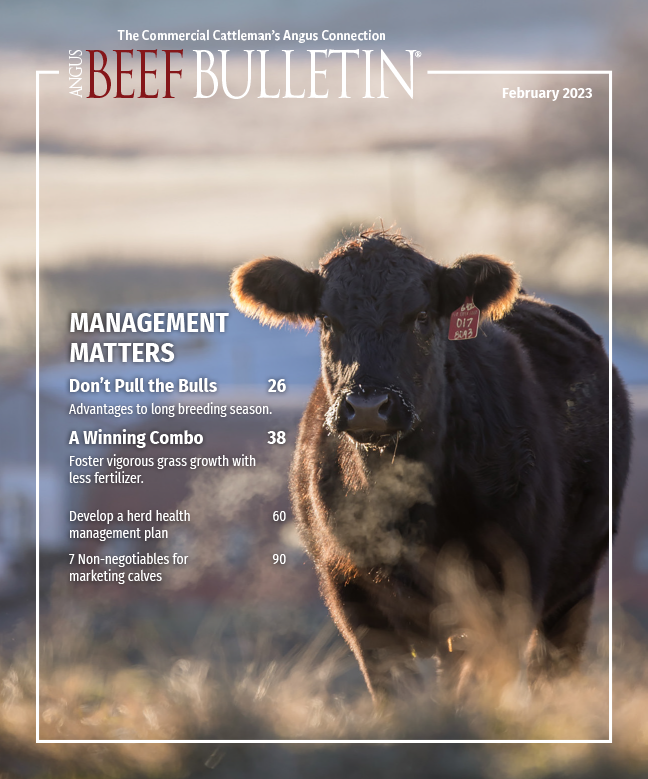
Limit-feeding Cows Corn as Alternative to Hay
Corn can provide cost-competitive means of supplying energy to the beef herd.
The lack of forage due to drought and current hay prices have producers considering alternative options for feeding cows this winter. One competitive option is replacing some hay in the diet with corn. Since corn has a higher energy content than hay, the cost of feeding hay is often higher than corn on the basis of price per pound of energy. For example, corn priced at $6.76 per bushel ($241 per ton) with a total digestible nutrients (TDN) value of 88% equates to approximately $0.16 per pound of TDN, while hay priced at $205 per ton with a TDN value of 52% is nearly $0.22 per pound of TDN.
While hay can be offered free-choice due to its low energy content, high-energy feeds like corn should be limit-fed to avoid putting too much condition on cows. Corn is relatively low in protein, so providing a 30%-40% protein supplement can help meet the cow’s protein requirement. Additionally, there must be some forage [0.25%-0.5% of body weight on a dry-matter (DM) basis] included in grain-based diets to promote rumen function and prevent digestive upsets.
A study conducted at The Ohio State University evaluated limit-feeding corn as an alternative to hay for mature cows in gestation and early lactation. Cows were either fed about 11 pounds (lb.) of whole-shelled corn, 2.5 lb. of a pelleted supplement and 2 lb. of hay (DM basis) or offered hay and a salt and mineral mix free choice from November to April. Hay was predominantly first-cutting orchard grass testing around 72% neutral detergent fiber (NDF) and 9.5% crude protein (CP). Cows fed free-choice hay ate twice as much feed, resulting in double the feed costs compared to limit-feeding the corn-based diet.
The results of this study suggest corn can be limit-fed to meet the nutrient requirements of cows without negatively affecting performance, conception rate or calf weaning weight.
When utilizing a limit-fed, grain-based diet, there are several factors producers should take into consideration to help facilitate the success of the program.
- 1. Adjust cows to the limit-fed diet over a week to 10-day period by gradually increasing the corn and reducing the hay to desired levels. This will help cows transition to the new ration and minimize digestive upsets.
- 2. Provide at least 24-30 inches of bunk space per cow. Adequate space is needed to ensure all cows have an opportunity to eat the limited feed that will be provided.
- 3. Utilize an ionophore to improve feed efficiency and help minimize digestive upsets.
- 4. Divide cows into groups based on age and pecking order, if possible, so boss cows do not keep younger and more timid cows from getting their share of the ration.
- 5. Realize that cows will act hungry when receiving a limit-fed diet, even though the ration is meeting the nutrient needs of the cow.
- 6. Feed cows at a consistent time each day to help minimize cows displaying discontented behavior.
- 7. Adjust the ration for changes in the cow’s nutrient requirements as needed. The nutrient needs of the cow are highest during late gestation and early lactation. Additionally, cold weather events can increase the energy requirements of the cow.
Depending on current commodity prices and availability, there is opportunity to winter cows using alternative energy sources to hay. Limit-feeding a corn-based diet can be a cost-effective option for meeting the nutrient requirements of cows. The University of Nebraska has conducted several studies to evaluate limit-feeding cows. For more information, see the “Dry Lot Beef Cow/Calf Enterprise” page at beef.unl.edu. For assistance with evaluating cost differences of feedstuffs, consider using the “Feed Cost Cow-Q-Lator.” Additionally, Nebraska Extension educators and specialists are available to help producers develop rations to meet cow nutrient needs.
Editor’s note: Erin Laborie is an extension beef educator with the University of Nebraska–Lincoln. Lead photo by Troy Walz.
References:
Loerch, Steven. 1996. Limit-feeding corn as an alternative to hay for gestating beef cows. J. Anim. Sci. 74: 1211-1216.
Loerch, S.C. 2007. Corn as an Alternative to Hay for Gestating and Lactating Beef Cows. Ohio Beef Cattle Letter. Ohio State University. Extension Beef Team.

